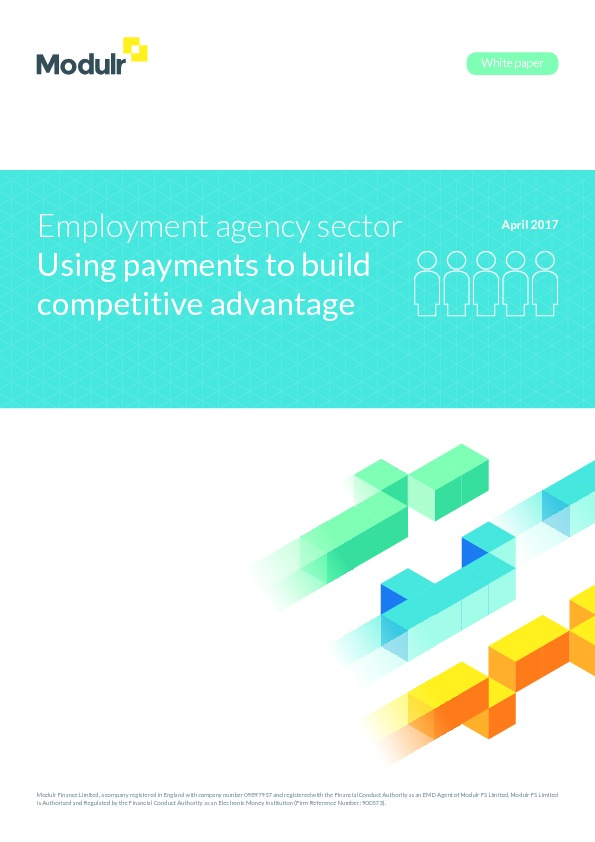The UK temporary and contract worker market is currently the strongest it has ever been, with around 20% of the workforce met by fexible resources1. However, the market is also getting tougher for employment agencies and intermediaries. While demand is at record levels, talent is in short supply and competition is intense.
At the same time, legislative changes and a tightening of HMRC focus on employment status compliance are increasing the volume of PAYE, National Insurance payments and reporting. All of this is placing pressure on margins, and heightening the need for agencies to differentiate the services they offer to employers and contractors.
Innovative, focussed, businesses can turn these market and regulatory challenges to their advantage. Those that don’t risk declining revenues and squeezed margins. Optimisation of payment processing and reporting should be a priority for employment businesses that want to minimise the burden of compliance, compete on client service and excel at candidate care.
The payments industry is also undergoing a revolution driven by a vibrant Fintech sector and changes in regulation. A new breed of payment providers is now delivering fexible, API-based payment processing tools and services that can help employment businesses achieve payment optimisation.
This paper explores these challenges and potential solutions in more detail, outlining how you can potentially use payments services to compete as well as comply.

Log in to access complimentary passes or discounts and access exclusive content as part of your membership. An auto-login link will be sent directly to your email.
Development note: Shows when the article IS from Payments Intelligence, AND when a reader is NOT a member of TPA
Development note: Shows when someone IS logged in OR logged out AND we don’t know if they are a subscriber or a member (i.e. no Cookie “role” is set to “guest” and “is_subscriber” is “false”)
Development note: Shows when we know someone IS logged-out, IS a subscriber, but their role is NOT one of the member roles (i.e. Cookie “role” IS set to “guest, customer, non-member” and “is_subscriber” is “true”)
Development note: Shows when we know someone IS logged-out, IS a subscriber and IS a member (i.e. Cookie “role” is NOT set to “guest, customer, non-member” and “is_subscriber” is “true”)
We use an auto-login link to ensure optimum security for your members hub. Simply enter your professional work e-mail address into the input area and you’ll receive a link to directly access your account.
Instead of using passwords, we e-mail you a link to log in to the site. This allows us to automatically verify you and apply member benefits based on your e-mail domain name.
Please click the button below which relates to the issue you’re having.
Sometimes our e-mails end up in spam. Make sure to check your spam folder for e-mails from The Payments Association
Most modern e-mail clients now separate e-mails into different tabs. For example, Outlook has an “Other” tab, and Gmail has tabs for different types of e-mails, such as promotional.
For security reasons the link will expire after 60 minutes. Try submitting the login form again and wait a few seconds for the e-mail to arrive.
The link will only work one time – once it’s been clicked, the link won’t log you in again. Instead, you’ll need to go back to the login screen and generate a new link.
Make sure you’re clicking the link on the most recent e-mail that’s been sent to you. We recommend deleting the e-mail once you’ve clicked the link.
Some security systems will automatically click on links in e-mails to check for phishing, malware, viruses and other malicious threats. If these have been clicked, it won’t work when you try to click on the link.
For security reasons, e-mail address changes can only be complete by your Member Engagement Manager. Please contact the team directly for further help.